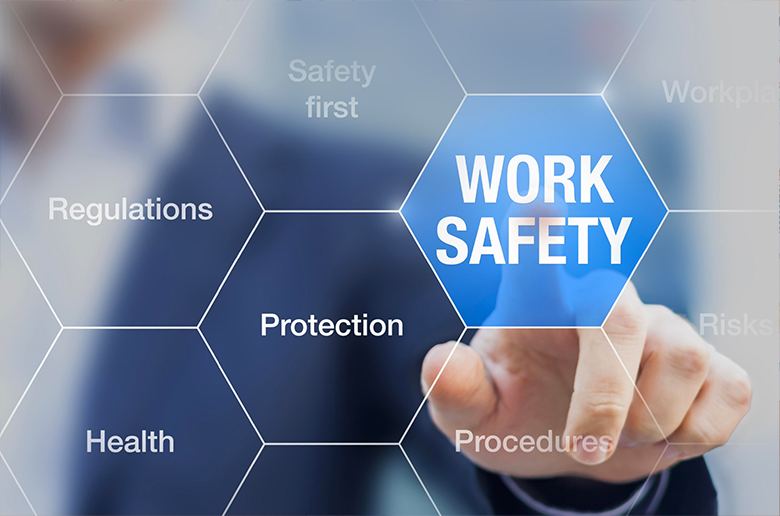Security & Risk Management

When screening patients and visitors for risk factors of violence and facilitating care team communication about high-risk individuals, several tools and best practices can be employed. Here are some recommended approaches:
Risk Assessment Tools:
- Patient/Visitor Interview:
- Incorporate a comprehensive interview process during patient intake or registration to gather information regarding any history of violent behavior, threats, or previous incidents.
- Include questions related to mental health, substance use, past experiences of aggression or violence, and any current stressors that may increase the risk of violent behavior.
- Observation and Behavior Monitoring:
- Train staff members to observe and assess patients' or visitors' behavior and demeanor for signs of potential violence or agitation. Encourage staff to be aware of indicators such as irritability, verbal threats, non-compliance with instructions, or escalating aggression.
- Recognizing the physical signs of potential threat or aggression in the workplace can help staff members assess and respond to potentially dangerous situations. While these signs can vary depending on the individual and context, here are some common physical indicators to watch for:
- Aggressive Body Language:
- Facial expressions: Intense or angry facial expressions, clenched jaw, narrowed or squinted eyes, raised eyebrows.
- Tense posture: Stiffness, squared shoulders, clenched fists, rigid or forward-leaning body posture.
- Invasion of personal space: Standing too close, leaning over, or making threatening gestures.
- Vocal Cues:
- Raised voice or shouting.
- Verbal threats, including explicit statements of harm or violence.
- Rapid or loud speech, with an agitated or confrontational tone.
- Restlessness and Agitation:
- Pacing back and forth.
- Fidgeting or repeatedly clenching and unclenching hands.
- Hyperactivity or restlessness, being unable to sit still.
- Signs of Intoxication or Substance Use:
- Slurred speech or impaired coordination.
- Unsteady gait or stumbling.
- Bloodshot or glazed eyes.
- Physical Signs of Stress or Agitation:
- Heavy breathing or rapid, shallow breathing.
- Sweating, especially when it's unrelated to physical exertion or environmental factors.
- Flushed or red face.
- Clenching or Grinding Teeth:
- Audible teeth grinding or jaw clenching.
- Visible tension in the jaw muscles.
- Hyperfocused or Fixated Behavior:
- Intense and unwavering eye contact.
- Fixation on a specific person, object, or topic.
- Ignoring attempts at communication or redirection.
- Sudden Changes in Behavior or Mood:
- Rapid and noticeable shifts from calm to intense anger or irritability.
- Dramatic mood swings or emotional instability.
- Expressing feelings of being overwhelmed or trapped.
It's important to note that the presence of these signs does not necessarily indicate imminent violence, but they may serve as warning signs that warrant attention and further assessment. If any of these physical signs are observed, it is essential to prioritize personal safety and follow established protocols for de-escalation, reporting, and seeking assistance from security or relevant personnel.
Communication Strategies:
- Establish clear and effective communication channels within the care team to share information about high-risk patients/visitors. Using standardized or common language can ensure that all team members are on the same page.
- Implement a standardized process for documenting and sharing relevant information among team members. This can include electronic health record systems, incident reporting mechanisms, or secure messaging platforms. Some hospitals have used simple words or symbols on white boards posted on room door seen upon entry.
- Ensure that communication regarding high-risk individuals is conducted confidentially and, on a need-to-know basis, adhering to privacy and legal regulations.
Interprofessional Collaboration:
- Foster a culture of collaboration and open communication among different members of the care team, including physicians, nurses, mental health professionals, and security personnel.
- Encourage staff to share concerns, observations, or relevant information about high-risk individuals to ensure a comprehensive understanding of the situation. This is particularly important during transitions of care.
Training and Education:
- Provide training to the care team on recognizing and managing potentially violent situations.
- Train staff on de-escalation techniques, effective communication strategies, and how to respond to violence or aggression in a manner that prioritizes safety for all involved.
- Educate staff on the importance of sharing relevant information and implementing appropriate measures to prevent and address violence.
Policies and Procedures:
- Develop and implement clear policies and procedures that outline the steps to be taken when a high-risk patient or visitor is identified.
- Define roles and responsibilities of staff members involved in the care and management of high-risk individuals.
- Establish protocols for initiating appropriate interventions, involving security personnel or law enforcement when necessary, and ensuring the safety of patients, visitors, and staff.